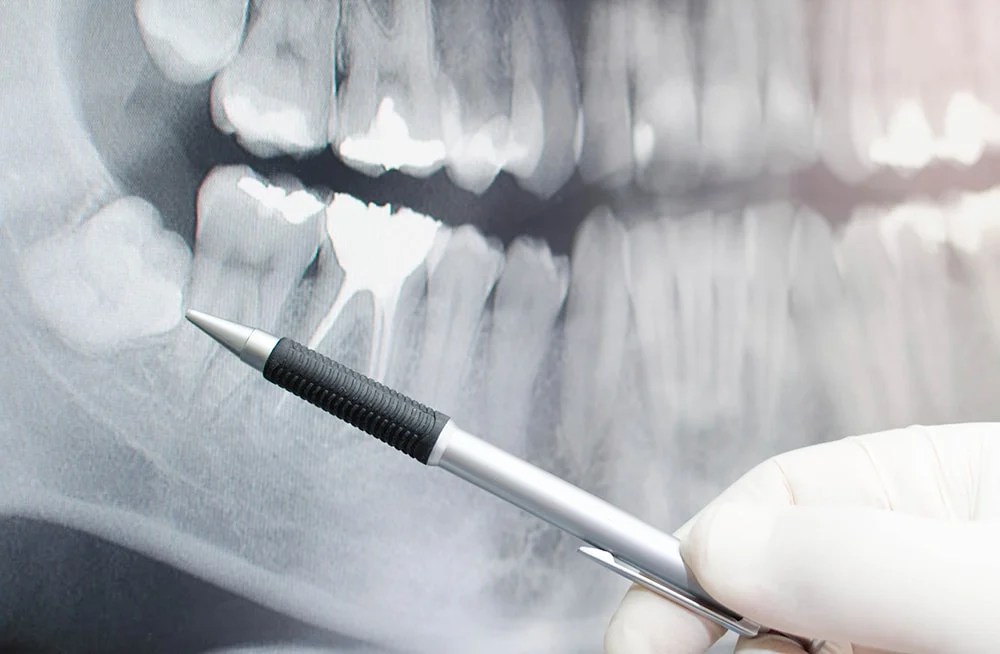Legend has it that wisdom teeth are so named because they erupt when “wisdom” has been attained at the intersection of childhood and adulthood. One thing is for sure, though: Wisdom teeth can be attended by adult-sized problems that not only affect them but other teeth as well.
It’s important, then, to keep an eye on the development of these teeth and, if necessary, intervene at an appropriate time. Taking a “wise” approach to wisdom teeth will result in less potential for disease and structural dysfunction and better oral health.
Wisdom Teeth and Problems Caused by Impaction
Formally known as third molars, wisdom teeth are located at the very back of the mouth on either side of both upper and lower dental arches (jaws). They are typically the last permanent teeth to appear (erupt) between the ages of 17-25. Most people have four wisdom teeth, although some may have more, fewer or, in rare cases, none at all.
Their late eruption is the primary reason wisdom teeth are prone to problems with coming in properly. They’re notorious for erupting at skewed angles or becoming impacted, a condition in which the tooth does not fully erupt but remains fully or partially submerged below the gum line.
Space seems to be the main factor in eruption abnormalities: Because most of the other teeth have already erupted, there may be little available room for a normal eruption of wisdom teeth. Smaller-than-normal jaws may also restrict available space.
While an impacted wisdom tooth may not display any pain symptoms (a person may not even be aware of it), it could still wreak havoc below the surface. The abnormally positioned tooth presses on other structures—like neighboring second molar teeth, gums, or nerves—potentially affecting their health and disrupting their function. This commonly results in periodontal (gum) disease with loss of bone around the second molars because cleaning the area between the impacted tooth and its neighbor becomes very difficult—for both the patient and the dental hygienist. The inability to remove bacteria and tartar from this area could endanger the long-term survival of these teeth.
When the impacted tooth erupts only partially, this can lead to pericoronitis—a painful, acute infection that develops around it. Pericoronitis is usually treated by gently irrigating the tissues to remove bacteria and other debris, and the pain managed with anti-inflammatory drugs like ibuprofen and antibiotics. Because it can be a recurring problem, the best recourse may be to eventually remove the partially impacted tooth.
Extraction Concerns With Wisdom Teeth
Extraction may also be the best option even when problems with the wisdom teeth are not yet manifesting themselves. Even so, extraction should only be undertaken after a careful assessment of the mouth to precisely determine the tooth’s location and position, along with the location of nerves, blood vessels and other structures near the tooth that could be affected adversely by its removal and must be avoided. Because the impacted tooth’s position may provide no straightforward removal path, wisdom tooth extraction can be more complicated than extractions of other teeth. This procedure, therefore, is normally performed by an oral surgeon using an appropriate anesthetic method.
Sometimes a wisdom tooth extraction may be considered for orthodontic reasons: to lessen crowding that may affect the overall bite. In these cases, the extraction should be justified by analyzing the potential benefits for an improved bite and appearance against the risk of problems aggravated or caused by the extraction. Since these effects are more likely if it’s extracted later in life (after age 25), it’s better to consider wisdom tooth extractions when the patient is younger.
Wisdom Teeth Bear Watching Before Problems Occur
Not all wisdom teeth erupt abnormally. When they develop and erupt in a normal fashion, they function just as other teeth do. Then there’s no need for any intervention other than the same regular hygiene and maintenance your other teeth require. They do bear monitoring, however, especially during the developmental years. By keeping a close watch on wisdom teeth for possible abnormalities, it’s more likely that intervention to prevent them from causing harm will have a better chance of success.
